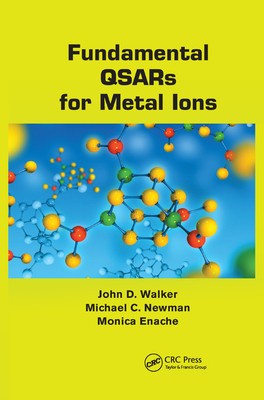
- We will send in 10–14 business days.
- Author: John D Walker
- Publisher: CRC Press
- ISBN-10: 0367380528
- ISBN-13: 9780367380526
- Format: 15.5 x 23.1 x 1.5 cm, softcover
- Language: English
- SAVE -10% with code: EXTRA
Reviews
Description
Fundamental QSARs for Metal Ions describes the basic and essential applications of quantitative structure-activity relationships (QSARs) for regulatory or industrial scientists who need to predict metal ion bioactivity. It includes 194 QSARs that have been used to predict metal ion toxicity and 86 QSARs that have been used to predict metal ion bioconcentration, biosorption, and binding. It is an excellent sourcebook for academic, industrial, and government scientists and policy makers, and provides a wealth of information on the biological and chemical activities of metal ions as they impact health and the environment. Fundamental QSARs for Metal Ions was designed for regulatory and regulated organizations that need to use QSARs to predict metal ion bioactivity, as they now do for organic chemicals. It has the potential to eliminate resources to test the toxicity of metal ions or to promulgate regulations that require toxicity testing of metal ions because the book illustrates how to construct QSARs to predict metal ion toxicity. In addition, the book:
- Provides a historical perspective and introduction to developing QSARs for metal ions
- Explains the electronic structures and atomic parameters of metals essential to understanding differences in chemical properties that influence cation toxicity, bioconcentration, biosorption, and binding
- Describes the chemical properties of metals that are used to develop QSARs for metal ions
- Illustrates the descriptors needed to develop metal ion-ligand binding QSARs
- Discusses 280 QSARs for metal ions
- Explains the differences between QSARs for metal ions and Biotic Ligand Models
- Lists the regulatory limits of metals and provides examples of regulatory applications
- Illustrates how to construct QSARs for metal ions
Dr. John D. Walker is the winner of the 2013 SETAC Government Service Award.
EXTRA 10 % discount with code: EXTRA
The promotion ends in 16d.15:33:44
The discount code is valid when purchasing from 10 €. Discounts do not stack.
- Author: John D Walker
- Publisher: CRC Press
- ISBN-10: 0367380528
- ISBN-13: 9780367380526
- Format: 15.5 x 23.1 x 1.5 cm, softcover
- Language: English English
Fundamental QSARs for Metal Ions describes the basic and essential applications of quantitative structure-activity relationships (QSARs) for regulatory or industrial scientists who need to predict metal ion bioactivity. It includes 194 QSARs that have been used to predict metal ion toxicity and 86 QSARs that have been used to predict metal ion bioconcentration, biosorption, and binding. It is an excellent sourcebook for academic, industrial, and government scientists and policy makers, and provides a wealth of information on the biological and chemical activities of metal ions as they impact health and the environment. Fundamental QSARs for Metal Ions was designed for regulatory and regulated organizations that need to use QSARs to predict metal ion bioactivity, as they now do for organic chemicals. It has the potential to eliminate resources to test the toxicity of metal ions or to promulgate regulations that require toxicity testing of metal ions because the book illustrates how to construct QSARs to predict metal ion toxicity. In addition, the book:
- Provides a historical perspective and introduction to developing QSARs for metal ions
- Explains the electronic structures and atomic parameters of metals essential to understanding differences in chemical properties that influence cation toxicity, bioconcentration, biosorption, and binding
- Describes the chemical properties of metals that are used to develop QSARs for metal ions
- Illustrates the descriptors needed to develop metal ion-ligand binding QSARs
- Discusses 280 QSARs for metal ions
- Explains the differences between QSARs for metal ions and Biotic Ligand Models
- Lists the regulatory limits of metals and provides examples of regulatory applications
- Illustrates how to construct QSARs for metal ions
Dr. John D. Walker is the winner of the 2013 SETAC Government Service Award.


Reviews